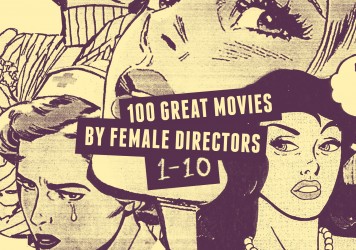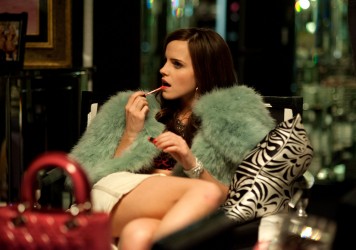So much of Marie Antoinette is so good, but a story this rich and dramatic deserved more.
Propelled by the post-punk dissonance of Gang of Four, Marie Antoinette is Sofia Coppola’s anthem of teenage kicks. It’s a sumptuous retooling of the life (but not death) of the French Dauphine, ripped from the ample bosom of the Habsburg empire and thrust, at 14 years old, into the gossip, gambling, shopping and shagging of Versailles.
Though it’s based on Antonia Fraser’s compelling slice of revisionist history, Marie Antoinette: The Journey (where the maligned queen is transformed into a romantic heroine, martyred by the masses hopped up on high-quality royal porn), this is no period piece. This is Coppola’s chick flick epic, her propulsive prom night fantasy; a hedonistic dreamscape of the children of France.
Given unprecedented access to Louis XIV’s postcard palace, Coppola has shot a film of dazzling sunset hues and intimate pastel subtlety – an endless expanse of marble, gilt and gold. This is a world of breathtaking opulence captured in all its attention-grabbing extravagance: every plate is a starburst of sculpted sugar; every costume a confection of jewels and silk; every hair piece a powdered tower of taffeta and flowers.
Outside, in the Petit Trianon and model village, Lance Acord’s photography falls under the same languid spell as Marie Antoinette herself, capturing the shimmering haze of half-remembered dreams with a gauzy, pastoral beauty.
Kirsten Dunst has that zeitgeist vibe that echoes Coppola’s signature cool. Clutching a dog to her chest, she looks young and fragile, like Dorothy disappearing down a yellow brick road that really is paved with gold. But where once she was the teen queen of Bring It On and Get Over It – younger and chubbier with curves and dimples – in her post-blockbuster ‘grown up’ career she’s got one of those off-the-rack Hollywood bodies, hardened and sheer, and her eyes are a little less wide. There’s none of the open, honest naivety that once made her seem so fresh and sexy.
Marie Antoinette’s is a dramatic ride. It takes in death and disaster, cruel fate, bad decisions, worse sex and great parties. But here she’s a feckless Valley Girl whose emotional range peaks at, like, super awesome, and bottoms out at totally lame. This is The OC meets the 18th C, all artifice – all sparkle and shimmer and strike a pose.
When a doctor comes to examine the royal couple to find out why they’ve failed to produce an heir (a noose around the Dauphine’s neck that stayed tight for seven years) the camera drifts lifelessly to the tableau of bedspreads and wallpaper beyond. Few lives have pitched so violently from high to low, but Coppola seems less interested in the queen’s state of mind, and far more fascinated by the state of her furnishings.
In her book, Fraser points out that any re-telling of the queen’s story must include “The elegiac as well as the tragic, flowers and music as well as revolution and counter-revolution.” But Coppola never got past page one – apparently never got to the juicy bits about imprisonment and execution, about the way Marie Antoinette changed and grew in the last years of her life.
And okay, it isn’t meant to be a spirited historical apology; it’s a mood piece, a tone poem that’s ethereal, ephemeral and cool-as-fuck. That might sell you a few more tickets to the teen crowd that think you’re oh-so what it’s all about, but the very thing that Coppola cherishes as a filmmaker – that moment-to-moment immediacy that made Lost In Translation tender and heartbreaking – gives Marie Antoinette the fickle transience of a fashion shoot.
She claims to see this “good-hearted, creative person”, but that’s not what’s on screen. With no sense of context, this is the same old Marie Antoinette – the same creature of vanity, excess and egotism that the Parisian libellistes ate up and spat out.
She has the keys to the kingdom, but not her own cage, and as she lashes out by splashing out, along with the cash she fritters away any sympathy for her future – for that guillotine forever lurking round the corner. How bad can it have been, this listless life? Why worry about her fate when she apparently didn’t?
It doesn’t help that as the film rolls on, structural problems emerge. Most damagingly, there’s never any clear idea of when or where we are in Marie Antoinette’s life. Maybe that’s a deliberate reflection on the hermetic world of Versailles, where days and years are marked in idle pleasures. But it’s amazing to discover (in retrospect) that you’ve witnessed 23 years pass.
Towards the end you sense that Coppola is thinking the same thing, as there’s a sudden flourish of the visual trick book to create that illusion of forward momentum, but it’s too little too late. Likewise, the few scenes that require lengthy exposition are gripped by a kind of paralysis; like nobody was sure what to do when the camera tracked back from the wallpaper.
Despite this studied veneer, there are moments when the artifice cracks and you’re assailed by an overwhelming melancholy. At a masked ball in Paris, or the queen’s eighteenth birthday in Versailles, this court of kids finally bursts into life, and only as they come to life do you remember how close they are to death. There’s a fin de siècle poignancy to these scenes, especially the birthday party, where the ‘children of wealth’ see in the dawn – a sunrise of heart-rending false hope.
But these occasions are rare; Marie Antoinette has an emotional pulse so faint, you feel like breaking into the projection booth and giving the reel the kiss of life.
At its best, Marie Antoinette – the film and the queen – is seductive and gorgeous and a little naïve. It opens with verve and promise, perfectly captured by the cheek of that Gang of Four refrain: “The problem of leisure / What to do for pleasure?” But it’s another line from that song that best describes this film – it’s not seduction, it’s a coercion of the senses, and we are not so gullible.
Published 9 Oct 2006
Sofia Coppola is the go-to girl for the dislocated fantasies of teenage dreams.
So much of it is so good, but a story this rich and dramatic deserved more.
Gain any further knowledge of the life and times of Marie Antoinette, and the film will diminish in your memory.

Read part one of our countdown celebrating the greatest female artists in the film industry.

Heists and high-fashion coalesce in Sofia Coppola’s subtle and intricate take on teen boredom and victimless crime.